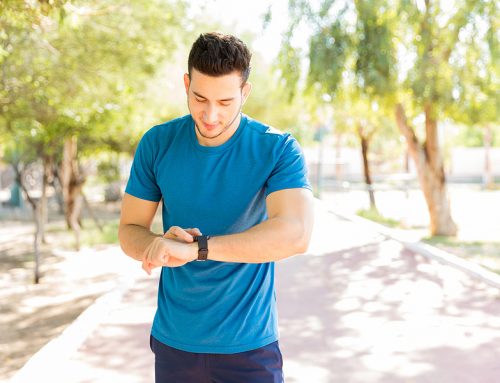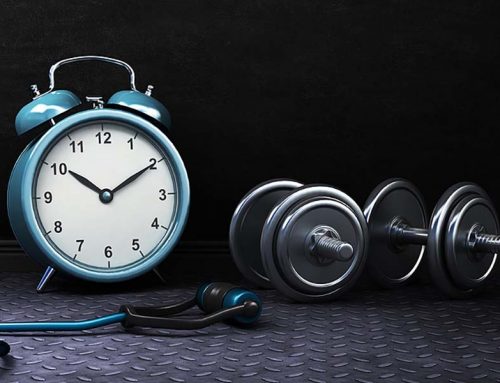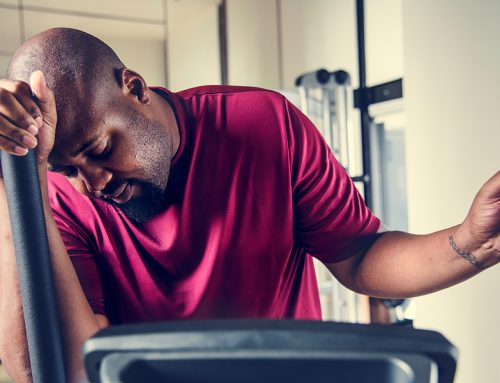In part one of this exclusive interview with strength and conditioning coach David Grisaffi: Is there any new research proving or dis-proving spot reduction?, can you “spot ADD” fat? (yikes!), Is training your abs to failure actually dangerous?, the truth about training your abs every day, can you isolate your upper and lower abs at all? (even a little?), do some infomercial ab machines actually work? (do people discredit them too quickly?), Is “core training” and “functional training” legit, or just ab marketing jargon?, can simple bad posture cause serious physical damage? and much more…
Tom Venuto. Hi David. Thank you for taking the time to do another interview with me. It’s been a while – a couple years actually, since our last one, and that interview was one our most popular ever, probably because everyone wants six pack abs!
For those of my readers who didn’t see our last interview or who may not know you yet, could give us a short bio and explain why your approach is different?
David: Well Tom, I’m originally a Physical Education teacher. I then caught the bug to get into the personal training business, way before it was even thought of as a profession. I then went to the prestigious CHEK Institute for training and since then have received 3 certifications including: High Performance Exercise Kinesiologist, Golf Biomechanic, and Health and Lifestyle Nutrition Counselor.
I’ve worked with many top athletes from boxing to golf and really enjoy working with student athletes at the high school and college level. I do approach all aspects of fitness from a holistic viewpoint. Nothing is one dimensional. If a person wants to lose body fat, then the entire spectrum of modalities must be incorporated. If we only look at the exercise side of the equation, the person will fail.
And by the way, thanks for the opportunity to talk with you again about health, fitness and ab training.
Tom Venuto: It’s my pleasure. Ok then, so let’s jump right in to some of the hottest topics and biggest questions we both get deluged with every day. First One: Spot reduction. It’s pretty much accepted and professed by fitness experts that you can’t burn fat off your abs by doing more and more abdominal exercises or that you can’t spot reduce fat by eating special foods or taking certain supplements. But every so often some trainer or nutritionist comes along and says, “Wait! Spot reduction IS possible.” Then they go on and pitch their new “breakthrough solution.” Has anything changed here or can we permanently toss spot reduction onto the pile of myths?
David: Well, certain hormones might facilitate fat storage or fat mobilization from specific areas of the body, including the abdominal area. There are also different types of fat, such as visceral versus subcutaneous fat, which respond differently. The visceral fat is more metabolically active, more insulin resistant and more sensitive to adrenergic stimulation. The subcutaneous fat is more sensitive to absorb circulating free fatty acids.
This goes in reverse as well. If you ask me, I’d say you can “spot add” fat. Again it has something to do with hormones. For example, if you have excess estrogen in your system all the time, whether you’re a man or woman, you’ll gain belly fat. Estrogen is associated with weight gain. And is a vicious cycle as estrogen increases the size of fat tissue and enlarged fat tissue increases estrogen production. I wrote about this back in 2007 in my report, Stubborn Fat Solutions. If you want a copy, visit my site at www.flattenyourabs.net and subscribe to the newsletter and you’ll receive a copy instantly in your email for free.
I have seen some studies where researchers found that interval training with emphasis on the legs, as in cycling, leads to more belly fat being burned. It was effective at reducing belly fat for men and women as well. But whether you could call that spot reduction is debatable.
So for all practical purposes, spot reduction is still basically a myth. For the general public, which is people who just want to get leaner and who aren’t worried about the last gram of fat from stubborn areas, they should just focus on improving overall health and metabolism with sensible training and nutrition and forget about the idea of spot reducing.
On the other hand Tom, I can see why some experts claim you can “spot reduce” so the matter could be contested either way, depending on your definition of what really constitutes spot reduction.
Tom Venuto: I’ve seen those studies myself where a certain training protocol reduced body fat and the fat loss was measured specifically in certain areas, but I agree that this is not spot reduction in the sense that you can control where the fat is drawn from. I also just saw a new paper on the differences between subcutaneous and visceral fat and I read the same things you did. So I think this is why some people say that doing this or doing that “reduces belly fat”, but again I don’t define that as spot reduction. You can’t intentional draw fat from one area of the body to the exclusion of others. Ok, moving on, how hard should you train your abs? Til they burn like a blowtorch? To failure? How do you know if you’ve worked them sufficiently to get results?
David: I’ve always said, your ab muscles should be trained more or less the same as your leg, arm and chest muscles. But I would especially avoid the “blowtorch” method or training to failure with your ab exercises. With ab exercises, your form tends to break very easily as you get close to failure. So training your abs to failure is very likely to lead to eventual injury and reduced function.
If you give yourself a bad back from, for example, doing too many advanced rotational movements at a “hardcore” level – and to failure – you set yourself up for a real failure! Without a stable back that’s functioning properly, you’ll only set yourself backwards. Possibly, you’ll never make forward progression again without re-injury until the underlying dysfunction is corrected.
Tom, this is a part of my Firm and Flatten Your Abs program that almost no other program has. It addresses descending situations – in other words, it allows you to find out when you’ve messed yourself up and you actually need to regress or take a step back to the easier movements and master the proper exercise form at the lower level to improve your situation, before even thinking about going back to the more intense training. The way I do this is I set up multiple routines and multiple exercises in levels and you can work it in both directions.
Tom Venuto: Is it ok to train your abs every day if you just use body weight exercises?
David: One of the most common abdominal myths is that training your abdominals every day is the best way to get a small waistline and develop the six-pack look in your midsection. This misconception was probably funneled through the bodybuilding world, because so many bodybuilders train their abs more frequently prior to competitions.
The bodybuilders get leaner and leaner as they get closer to the show, so the onlooker figures it’s the more frequent ab training that’s bringing in the definition. But you know as well as anyone, Tom, that the ripped abs you see onstage didn’t come from the ab training, the abs came from the strict contest diet, b
ut as an onlooker in the gym, you don’t see all the work that takes place outside the gym with proper nutrition. Those bodybuilders have incredible discipline with their nutrition.
Daily ab training is not only a waste of time, it’s an approach that might even be counterproductive for the average person who doesn’t use performance-enhancing substances or have a naturally high recovery capacity. That’s because all the extra ab training is just adding more volume to your program that your body has to recover from.
Let me explain two reasons that daily abdominal training is unnecessary and does not guarantee you a six-pack. First, muscle fiber types do vary from muscle to muscle, but essentially, the muscle tissue of your abs is virtually the same as the muscle tissue in the rest of your body. Abdominal muscles cannot become stronger and more developed without time to rest and recover after each workout, just like any other muscle group such as your biceps or chest. You wouldn’t do 100 barbell curls every day to “see your biceps” or 100 bench presses every day to “see your pecs,” so why do the same for your abs?
Second, even if you could achieve excellent muscular development in the abs with daily training, you won’t be able to see your abs if they’re covered with a layer of fat. Daily abdominal training does not burn the fat off your midsection! Fat is lost by creating a caloric deficit through your diet. Build the muscle with exercise; burn the fat with diet, as you always say Tom.
During the initial phase of the Firm and Flatten Your abs program (Level 1), I recommend that you perform exercises daily for the first two to three weeks. However, these Level 1 exercises are very basic movements using only your body weight, and they are designed to prepare, strengthen, and neurologically program your body for the more advanced exercises to follow. For the long term, you can get fantastic results training your abs every other day (about four days a week), and once they’re developed, you can maintain your abs with even less frequent training.
Tom Venuto: Once and for all: Can you independently train your upper abs and lower abs or are the abs just one long sheet of muscle that gets worked from top to bottom?
David: Well they are not one long sheet. The abdominal muscles (upper and lower) you are referring to are called the rectus abdominis. This muscle has 8 different sections and they are controlled by 8 different innervations. Your bicep has one innervation. Your hamstring has two – one for flexing your lower leg and one for extending your leg at the hip. The abs are different.
If your abdominals were just one long sheet, it would have how many? Well, one for flexion. But the multiple innervations tell us that his particular muscle is complicated and can contract and stabilize in different planes and at different pressures. This is why we can bend and twist at the same time.
It does get more complicated than this, and I know that even the scientists are still researching and debating this, but the bottom line, the way I see it, is that your abs are NOT just one long sheet of muscle tissue.
Tom Venuto: I’ve read both sides of the upper versus lower abs debate, but I’m going to have to agree with you on this one. While you can’t isolate upper from lower and for that matter you can’t really isolate anything literally speaking, I do believe you can put more emphasis on one aspect of the abdominal musculature. Some of the EMG studies show that. I also know for a fact that this is definitely true for the obliques. Quite a few studies show much greater oblique involvement from some exercises than others so we can hit different areas of our midsection.
Ok next question. The Fitness equipment industry STILL keeps coming out with new ab machines every year. They just got some ab coaster thing at my gym. It’s the commercial version of the home unit sold on the infomercials. The other latest wonder that people ask me about is that core trainer machine where you throw the medicine ball into the basket. Looks like a carnival game and gets a lot of attention in gyms. Two questions. First, are there any machines you’d recommend our readers definitely stay away from, either because they’re harmful or flat out don’t work? And second, is there ANYTHING at all you might see on a late night infomercial for ab training that has any value? I know you like swiss balls and have for a long time, but is there any new equipment or gadgets worth using?

One of those machines though, that I’m not a big fan of is the one where you sit on a seat and rotate left to right. It’s not very effective to begin with, but it could do more damage than good as it works in only one plane of motion. I think they called it the red machine or something like that. You’d be better off with a standing woodchopper, which is one of the exercises I recommend in my Firm and Flatten Your Abs book.
The medicine ball core trainer is a machine I’ve seen on TV and it think that has some application if it’s used within a properly periodized program. But it has its downsides. It’s very expensive, takes up a lot of space, has limited application for training the entire core musculature, plus sitting down is not what we do in real life battles. You can do the same exercise with a partner and medicine ball too by the way. That’s just my opinion.
I really don’t watch too much TV, let alone infomercials, so I can’t help too much more. I did see an infomercial recently for the electric ab belt. This device let’s you sit and do nothing and the current stimulates your muscles to contract. I can’t say it works or not… but the whole idea is pure laziness if you ask me. We need to move our bodies and work hard for our abs.
Tom Venuto: Yeah I’ve seen new incarnations of those electronic ab belts – reminds me of Jason from Friday the 13th – never dies… just keeps coming back to life! Moving on… we touched on core training. Do you think the word “core” or the phrase “core training” are being used strictly as marketing buzzwords or is this a legitimate training concept that we need to pay attention to and implement in our routines? I’m asking actually because I have seen you use the phrase core training quite a bit, so am I right assuming that you feel it’s a legit concept.
David: Well, I do feel strongly that the term is overused by people who do not really know how to properly create and implement a solid core program. So it’s not that I have a problem with the phrase core training. Proper core training will increase abdominal coordination, muscle development, balance, strength and much more. The problem is these programs or machines that are being referred to as core training are not tailored to the person doing them. Training programs have to be individualized and like I said before, the exercises and workouts have to be prescribed in proper progressions or levels of difficulty.
Other problems in core training program design are using too many exercises with a short range of motion and too many flexion exercises vs. horizontal, rotational and side to side movements. Let’s say you see an exerci
se demonstrated by someone with a great six pack on You Tube. Then you go to the gym and try to duplicate it. Never in your mind did you think, hey this is more ascended (difficult) than I expected, and then bam!, you’re injured.
But the core training concept is legit because when done correctly, you form a stronger “relationship” between your core and your upper body. At the same time, you form a stronger “relationship” between your core and your lower body. All of this leads to a more functional body overall.
Far too often, core training is just a dumbed down version of floor abdominal routines that lead to the shortening of the rectus abdominis, forward head posture and rounded shoulders making it harder to breathe and increasing kyphosis (“hunchback”). None of this is good for the person who wants to be athletic and healthy.
Tom Venuto: You write and speak a lot about posture, in fact I noticed you have a report on posture that comes with your abs ebook. Posture seems like one of those things your mom would nag you about – “sit up straight, don’t slouch” – right along with “eat your vegetables!” But for a lot of people, the subject of posture seems kind of boring or even irrelevant. Why do you stress posture so much? Why is it important? When you look at someone’s posture, what are you looking for? If you see bad posture does it mean there are already serious problems or problems on the way in the future?
David: Posture is where movement starts and stops, so it’s very important to achieve and maintain correct posture. Poor posture doesn’t just happen to couch potatoes. This directly relates to the core training issue we just talked about. When training is done improperly, it leads to poor anatomical alignment. Over the years of doing this, your body gradually changes position.
If you’re a woman with rounded shoulders, forward head position and locked out knees from wearing high heels, your chest appears concave. If I may be somewhat blunt, this doesn’t present a nice look to a man who is looking for a well-chiseled and well-carried woman. Your breasts even look flat and hanging. Now if I take this same woman and stand her straight up, she looks totally different, much more attractive, just from the change in posture.
I mention the attractiveness part first because like you said, we’ve always been told not to slouch. It doesn’t look nice. But people tend to just shrug it off. But if I say, this isn’t only bad for you, it’s going to make you look less attractive, I hope to get more people’s attention.
This goes beyond looking good though. Posture is a health and quality of life issue. Research has shown that bad posture can lead to chronic pain, headaches and TMJ problems – and that’ s the least of the list if the poor posture is left uncorrected. Faulty posture can be a pain in the neck literally and lead to other health problems in the respiratory, circulatory and digestive systems.
Some people head off to the chiropractor and get adjustments, but the underlying problem is still there. So engaging in a corrective exercise program is the answer. It’s a must.
Now, you asked, “What is ideal posture?” It’s when your body held in space places minimum tension on joint structures at rest. So how would you test yourself? There are a few ways to do a self test for proper posture:
1. Look in a mirror with your side to it. Your ear, wrist, hips and ankle bone should line up. You can also use a string hanging from above to assess this better. Do not cheat.
2. Stand with your back and buttocks against a wall. Put your feel about 6 inches out from the wall. Does your head touch the wall easily? If not, you have forward head posture.
3. Lie on your back on a hard surface with your head on the floor, looking straight up. If you feel a tilt of the head forward or backward you have a thoracic system situation and faulty posture.
The general consensus is that for every inch your head is held forward, an additional 10 pounds of stress is added to your supporting joint structures. Over time, this wear and tear causes many problems such as muscle pain (burning and aching), you’ll feel tightness all the time, nerve pain can develop, joint pain will surely surface and tendon or ligament stress will become apparent.
Now, how do you improve this postural situation?
1. Become aware of your posture at all times
2. Take regular breaks from sitting at a computer
3. Make sure you have an ergonomic work place
4. Sleep with a proper pillow
5. Follow the philosophy of stretching short tight muscles and strengthen longweak muscles.
6. Follow a properly prescribed total body training program and a core/abdominal training program that’s designed specifically for your current level of fitness. Check out Firm and Flatten Your abs if you want a custom-tailed core and abs program.
Beyond Six Pack Abs will be continued in PART TWO.
About David Grisaffi:

© Copyright David Grisaffi and Personal Fitness Development – Reprinted with permission
No reproduction of this article is permitted without the express written consent of the author.
Burn The Fat Blog has an affiliate relationship with some of the products and services discussed on this website and may be compensated from purchases. Burn the Fat Blog has thoroughly reviewed the products it links to, recommends or endorses, however you should always perform your own due diligence before buying goods or services from any 3rd party via the internet or offline.







I agree and strongly advocate the importance and value of the postural assessment.Postural alignment is consistent with establishing true balance in exercise programming and the end result for the client not to mention the avoidance of injury.I believe that reoccurring injury “the famous everytime I get going I get set back with an injuury” stems from postural imbalance and functional misalignment both in action and while at rest.Thanks for this informative and validating article. I enjoyed it.
Thank you, for all the valuable information!I makes perfect sense the way you need to work your abs and how incredibly important it is to have the right posture in all the things you do. From work, to exercise and in your daily life to prevent injuries of any kind.Wonderful interview! :)
Yeah, that’s right, daily ab training is like daily biceps training. I think this shows clearly enough that muscles need rest. Even abs.Another interesting thing is the separation of upper and lower abs. When you do exercises that “should” train upper abs, you also move lower abs. Abs are one muscle and it is impossible to separate them. Probably it’s like trying to separate your biceps.
I found this interview a great help: It reminds me of the things I know, but have neglected or forgotten, and it bolsters some other aspects I needed to know. Thank you, David and Tom.JP
HEY THANX FOR UR EXPERT ADVICE, DAVIDS INFO HAS ALREADY HELPED ME ALOT IN SHAPING MY BODY GETTING PERFECT ABS……..THANX ALOT. IM LOOKING FORWARD TO PART 2 OF THE INTERVIEW
Hi Tom, I finally took the plunge and started the program. In my first week I lost 1/2 inch off my waist and 2 pounds.My question of concern is my BMR dropped from 1974 to 1958. Should I be concerned?Thanks. William Eddy
william – It is possible that with extreme and prolonged low calorie dieting, there can be an “adaptive” drop in metabolism, but unless you are on an extreme low cal diet for a long time, you probably shouldnt worry about it at all — your BMR drops when your body weight drops. Small person needs fewer calories than large person.
That was an interesting read and i agree that well considered core stability exercises should be an essential part of every exercise programme. I use to have lower back pain due to having a lordsis spine however since participating in pilate classes twicw a week i no longer experience this discomfort ever!
thanks tom, this was is very informitive
Awesome article – thanks!!